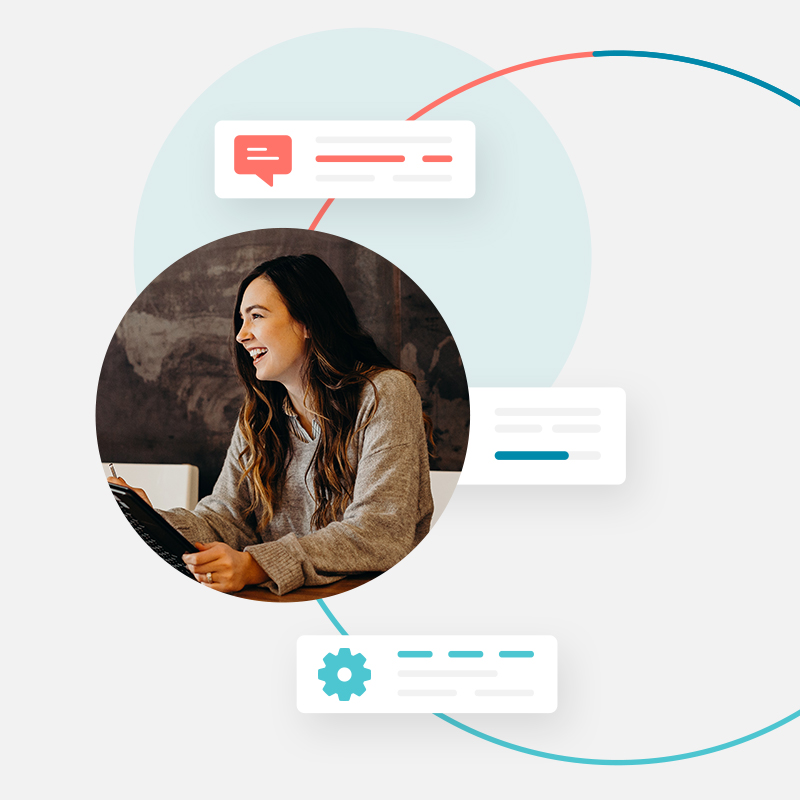While there are still concerns surrounding COVID-19, many organizations are focused on creating safe, productive, and effective “return to work” policies for their employees. However, “return to work” can look very different for executives who want their teams to return to the office and their employees who have enjoyed the freedom and flexibility of working from home for the past several months. “The Great Resignation” is rapidly impacting companies as more employees leave their jobs to take on roles that better fit their lifestyles.
According to the Microsoft 2021 Work Trend Index, 46 percent of the global workforce is considering leaving their employer this year.
Creating “hybrid workplace environments” is top of mind among executives and HR leaders who are racing to attract new talent and minimize employee turnover. According to research from Gartner, 55 percent of employees say that whether they can work flexibly will impact whether they stay at their organizations. Among employees who are currently working remotely or in a hybrid arrangement, 75 percent say their expectations for working flexibly have increased.
There is no one-size-fits-all strategy for recruiting and retaining top talent, especially in these unprecedented times. However, there are some ways you can update your talent strategy to better align with the hybrid workplace.
Set Clear Guidelines and Expectations for Hybrid Work
The first thing people leaders need to consider when updating their talent strategies for the “next normal” is to clearly define and communicate the company’s hybrid work policies to their candidates and employees. While consistency is key, there should be some structured flexibility in shaping these policies according to factors such as company tenure and position level. For example, an entry-level employee could initially benefit from being in the office and learning from the people around them. After they’ve acclimated to the company’s culture and built relationships with their colleagues, they could potentially shift into a hybrid work model.
As part of their hybrid work policy, Google announced that employees would return to the office for only a couple of days per week in spaces designed specifically for collaboration. This approach could be adopted for more seasoned employees who are comfortable working on their own and want the flexibility to connect with their colleagues in person during part of the workweek.
Consider Your Existing Employees When Filling New Roles
While “the Great Resignation” is real, you can minimize its impact within your organization. Companies that leverage performance enablement solutions can identify internal talent who may be interested in taking on a new position or may be ready for a promotion. Filling vacancies with existing team members has many advantages, especially in hybrid work environments where it can be challenging for both candidates and new employees to understand how things work at the company and team level. Chances are, they already have extensive knowledge about the company’s growth plans, products/solutions, team dynamics, and more which they can share with the rest of the team.
Communicate Often and Consistently With Your Candidates
As the CMO of a SaaS company recently posted on LinkedIn, “I know that EVERYONE is hiring and changing jobs right now.” And she’s right. So now more than ever, it’s critical to create consistent communication flows with potential candidates (both internal and external). Chances are, they are also working from their kitchens, living rooms, and spare bedrooms. Since it’s less likely that you can meet in person, having consistent “touch base” conversations with candidates will keep your company on their radar, help build the relationship, and enhance their experience.
Continue to Invest in Collaborative Technology Solutions
The pandemic forever changed the way we work, communicate and collaborate. People leaders should continue to invest in technologies that can enhance employee productivity, knowledge sharing, and collaboration – effectively erasing the perceived gap between in-office and remote employees. Microsoft Teams, WebEx, and Slack are essential communication tools for 1:1s, team meetings, industry conferences, and more. Microsoft Teams can also capture every conversation on video and transcribe meetings so people can catch up on anything they miss. Performance enablement solutions such as Betterworks help facilitate employee engagement, provide online coaching, and help align dispersed workforces around your company’s most strategic priorities.
Build and Convey a Strong Employer Brand
If there is a silver lining to the pandemic it’s that organizations – and the people behind them – adapted and succeeded under unprecedented circumstances. While no company has completely figured out the best hybrid work scenario, the smart ones know that their current and future employees are the customers of it. People leaders and executives should routinely engage with their employees to understand their needs and concerns around hybrid work. They should also ensure that potential job candidates have a clear understanding of what it really means to be working in a hybrid work environment within their company so that their personal values align with those of the company.
Looking for more ways to create a thriving workplace? Our guide has you covered.








